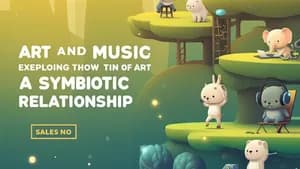Improvisation, the art of spontaneous creation, holds a captivating power in both the visual and auditory realms. It's a journey into the unknown, a dance between intention and chance, resulting in unique and expressive works. This exploration delves into the essence of improvisation in art and music, offering practical insights and strategies for students and parents to foster this vital creative skill.
Understanding the Essence of Improvisation
Improvisation is often misunderstood as simply unplanned activity. However, it is far more nuanced. It's about embracing uncertainty, trusting your instincts, and reacting in the moment. It requires a foundation of knowledge and skill, but it's the willingness to step outside the structured framework that truly unlocks its power. Think of a jazz musician who deftly builds a melody on the spot, reacting to the notes of fellow players, or a painter who allows the flow of their brushstrokes to lead them to unexpected compositions. This creative process is fundamentally about exploration, risk-taking, and the joy of discovery. For students, improvisation can help them develop critical thinking skills, adaptability, and even problem-solving abilities, all of which transfer to other academic disciplines. Encourage your child to experiment with spontaneous activities, even in non-artistic contexts; it could be simply devising a spontaneous story based on a single image or coming up with an impromptu game.
Improvisation in Music: Finding Your Voice
Music provides a fertile ground for improvisation. From the blues riffs of a seasoned guitarist to the free-flowing melodies of a classical musician venturing into experimental territory, improvisation allows musicians to express emotions, explore soundscapes, and deeply connect with their instruments. For students, beginning with simple exercises like call-and-response games can build confidence and understanding. Start with familiar melodies and encourage variations. Learning basic chord progressions and scales provides the foundation for more complex improvisations. Imagine starting with a simple

